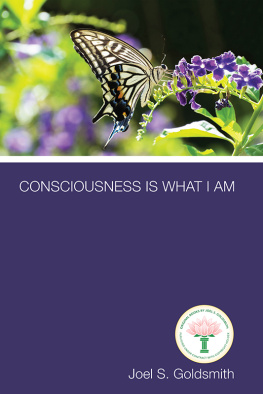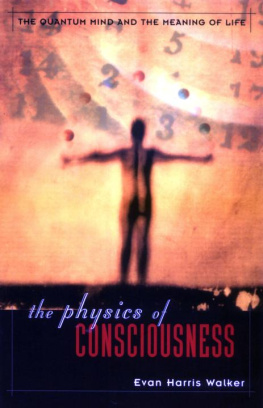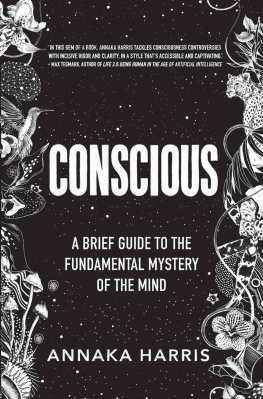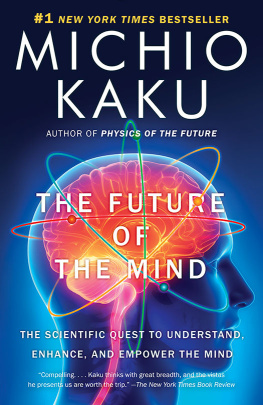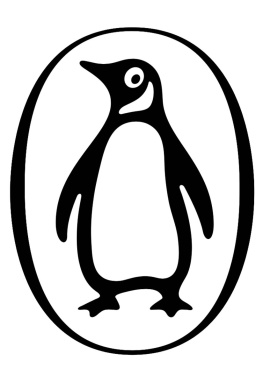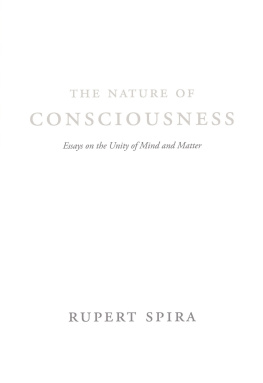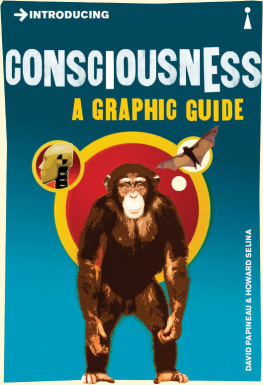I have spent forty years pondering the nature of experience, and this book is the distilled essence of that exploration. Strangely and perhaps not so strangely when I was six years old I said to my mother, I think our lives are Gods dream. Almost exactly fifty years later this book makes that intuition explicit in rational terms. So I would first like to thank my mother for nurturing this intuition, and also my father, from whom I inherited the means with which to express it.
To do justice to all those to whom I am indebted would take a book in itself, but in spite of this I will try to condense it into a few paragraphs. The warp of my spiritual enquiry and practice has always been the Vedantic tradition, which I first studied under the guidance of Dr. Francis Roles at Colet House in London, which was like a second home for the first twenty years of my adult life. Dr. Roles had received the traditional Advaita teaching from Shantananda Saraswati, the then Shankaracharya of the north of India, whom I consider to be my first teacher.
However, if the warp of my investigation into the nature of reality was made of one colour, the weft contained many. During these years I learned the Mevlevi Turning, a practice of prayer and movement developed by followers of the thirteenth-century Persian mystic Jalaluddin Rumi. This tradition was preserved at Colet House by my late stepfather, Vilhelm Koren, whose presence in our family, though somewhat distant, was a powerful and subliminal influence in my teenage years that conveyed to me the essence of the Sufi tradition. At that time I also learnt Gurdjieffs Movements and studied the writings of the Russian Philosopher P. D. Ouspensky, which had a profound and initiatory effect on me.
During those years, I regularly attended the last meetings of Jiddu Krishnamurti, whose school at Brockwood Park in Hampshire, UK, was close to my childhood home. On one such occasion I found myself standing next to him in the queue for lunch and, to this day, the quality of our encounter left a deeper impression on me than anything I ever heard or read him say. His fierce and tender passion were both an initiation and an incentive in the early days of my investigation.
Also during those years, the teachings of Ramana Maharshi accompanied me on a daily basis, but it was not until I met my teacher, Francis Lucille, that the non-dual understanding became my lived experience. What it is about the relationship with a friend that has the capacity to transform intellectual understanding into felt experience, I do not know. Suffice it to say that everything before that encounter was a preparation for the ongoing revelation of the non-dual understanding that began to unfold under Franciss guidance and friendship.
Until meeting Francis my approach had been primarily a devotional one. Francis introduced me to Atmananda Krishna Menons incisive lines of higher reasoning, on the one hand, and to the Tantric tradition of Kashmir Shaivism, which he had learned from his teacher, Jean Klein, on the other. Both these introductions opened up new avenues of exploration and experience. Under Atmananda Krishna Menons meticulous guidance, I felt really free for the first time to think about truth or reality and was, as a result, relieved of the misunderstanding common among many traditional and contemporary non-dual approaches, and to which I also subscribed in the early years that thought is inimical to spiritual understanding. From the Tantric approach I learned to take my understanding into the way I felt the body and perceived the world.
However, of the many things I learned with Francis, and for which I am eternally grateful, perhaps the most significant was the realisation that my intense desire to know the nature of reality and my love of beauty were the same endeavour, thus reconciling in me the truth seeker and the artist. In the years I spent with him, I came to understand John Keatss words:
Beauty is truth, truth beauty, that is all
Ye know on earth, and all ye need to know.
There have been many other influences, too many to be named here, except for Michael Cardew, with whom I apprenticed as a ceramic artist in my late teens. No account of my influences would be complete without reference to him. He taught me, without my realising it, the language of form and the process that an artist must undergo, both within himself and in relationship with his materials, if he wants his work to transmit meaning from the maker to the seer or user through lines of cognition that are not accessible to reason. He taught me what it takes to make an object that has the capacity to indicate viscerally, as Czanne put it, the taste of natures eternity.
I would like to thank Deepak Chopra for his characteristically generous comments in the Foreword to this book and for his unreserved support of my work. Likewise, Bernardo Kastrup for his penetrating and insightful Afterword, and for the fearless humility with which he extends the subject matter of this book to a field into which I cannot venture. I am also grateful to Mark Dyczkowski, Paul Mills and Peter Fenwick for their kind and generous endorsements.
I would also like to thank all those who, in a more direct way, have been instrumental in the fruition of this book, especially Jacqueline Boyle and Rob Bowden for their endless patience and scrupulous attention to detail, and to Linda Arzouni and Caroline Culme-Seymour for their helpful comments about the manuscript.
Finally, I would like to thank my companion, Ellen Emmet. I am not often lost for words and, as you are about to discover, have yet to transpose into my writing the art of less is more that, at least to some extent, I mastered in my studio. However, when it comes to acknowledging my gratitude to Ellen, I am simply lost for words.
Rupert Spira
October 2016
Under Ruperts gentle but decisive guidance, you have just explored the underlying nature of reality through the primary yet most neglected avenue of knowledge available to us: introspection. Ruperts mastery of introspection, and his ability to take us along with him as he explores the foundations of Self and World, reveal what our cultural indoctrination has laboriously kept hidden from us: that there is, in fact, no difference between the two. Self and World are one, a conclusion as contrary to our mainstream cultural narrative as it is self-evident upon lucid introspection.
How can there be such dissonance between the basic tenet of our culture and direct introspective experience? Even if this book has succeeded in helping you truly understand that the World is an excitation of the Self in Ruperts words, a movement of mind no more distinct from the latter than ripples are distinct from water, the power of the mainstream cultural narrative may still instigate a lingering discomfort. Is it plausible that our entire culture could have gotten it so wrong? you might ask yourself. In this brief Afterword, I will attempt to show you that, because of an imbalance in our cultures approach to knowledge, not only is this plausible but it is to be expected.
You see, we can acquire knowledge through three distinct avenues: empirical observation, rational thought and introspection. Empirical observation consists in the subset of our experiences associated with the five senses. As such, if we define the World as encompassing everything we can see, hear, touch, taste and smell, then empirical observation consists in knowing the World directly. Notice that, defined in this way, the World is simply a set of experiences qualitatively equivalent to, for instance, an idea that persisted for almost two millennia. Only when Galileo decided to empirically observe whether that were really the case by famously dropping two canon balls of different weights from the leaning tower of Pisa did we realise that the World is, in fact, different from what Aristotle had imagined it to be. Thanks to empirical observations such as Galileos, we have now been able to know the World well enough to put a man on the moon and robots on Mars, and even land a probe on a comet.
Next page


